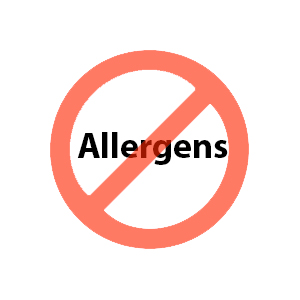Allergen Management: Best Practices For Food Manufacturers

Allergenic foods are a serious safety risk. While harmless to most of the consumer population, they are harmful and even life threatening to some, causing serious medical reactions, such as anaphylactic shock, when foods with the allergenic protein are consumed. Scientific research and legislation have helped us understand a great deal about managing these food allergens in manufacturing. Yet so much more needs to be done in making these risks safer for the growing allergic population. In 2013, the CDC reported that food allergies among children increased by half from 1997 to 2011. As these numbers continue to rise for children and adults alike, what are the best practices for food manufacturers to include in managing food allergens? Here’s what you need to know.
Evan Rosen is participating as a panelist in the session “Rubber Meets the Road: Practical Compliance with FSMA and Preventive Controls” at the 2016 Food Safety Consortium. The session will be moderated by Rajan Gupta and Dana Johnson Downing of TraceGains | LEARN MOREResearch and Development for Allergen Programs
Thorough development and foresight are essential for any food manufacturer to succeed when implementing an allergen program in its processing. It is wise for food manufacturers to select the individuals in their company who are a good fit to lead the allergen program. When developing your program, create an “allergen map” to understand where allergenic ingredients are located in your plant and how they travel while products are processed.
The R&D stage is the optimal time to plan every step of the allergen management process—from supplier sourcing to cross contact in processing, to labeling and every step in between—before the risks are actually encountered. This is in line with the new preventive controls approach to be taken with FSMA’s Food Safety Plan model.
Purchasing, Labeling and Storing Ingredients
When purchasing ingredients from suppliers, your supply sources should be just as stringent about allergen management as you are in order to reduce liability. Require your suppliers to have an allergen map of their own and lettered documentation declaring that the items you are purchasing are free from contact with food allergens. The FDA food label law currently recognizes the top eight food allergens as:
- Peanuts,Tree nuts—including almonds, walnuts and hazelnuts, among others
- Milk (not to be confused with lactose intolerance)
- Eggs
- Wheat
- Soy
- Fish
- Crustacean shellfish (crab, lobster, crawfish, etc.)
Also, be mindful of allergens that apply to the country of export, such as Sesame Seeds, Sulfites and Mustard Seed in Canada.
When receiving and storing supplier ingredients, check the labeled contents for any updates and tag the units that contain allergens so they can be easily identified and stored separately. A pictorial system is very effective. Ensure that each unit is tightly sealed, as even slight amounts of leaked allergens can pose recalls and elevated risks to your consumers.
Processing and Cleaning Cross-Contamination
Human error is only one factor that predisposes risk of cross-contact; production timing, processing lines, facility traffic, protein structure (e.g. powder, liquid, paste) and even the type of equipment used can be a game changer when it comes to the proper handling of allergens. In order to prevent allergen cross contact, scheduling long lines of products with common allergens is recommended to minimize changeovers. Dedicate unique tools, utensils and equipment that will handle the allergen if possible, as every piece contacting an allergen must be washed before handling allergen-free processing.
Assign plant employees to specific locations to avoid risk of cross-contact travel—color coding uniforms helps a great deal in managing this concept. Manufacturing equipment that is designed for easy cleaning is also ideal. For cleaning procedure of cross-contact removal, wet cleaning methods are most effective followed by dry methods. These procedures should be validated using a recognized protein-specific test method such as lateral flow or ELISA. When flushing, be sure to keep the flushed material isolated from all allergen-free areas. Careful separation and mindfulness is key to a successful allergen program.
Staff Training and Education
In order for any allergen program to be effective, all plant, production staff, contractors and visitors must be aware of the importance of it and understand the impact it has on consumers. Incorporating different learning methods helps to communicate this to them. Occasional testing and validation of applying this knowledge ensures the integrity of your allergy-free claims and establishes trust. Passion and commitment also play a vital role in achieving success in your program as a whole.
From purchasing ingredients to staff education and cross-contact prevention, one can see that plenty of work and forethought goes into having an allergen management program. With these best practices in place, food manufacturers can be well prepared for the increasing demand of allergen safe products for consumers across national and international markets.